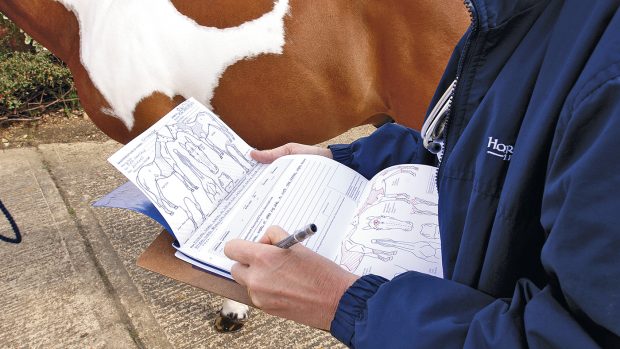More articles on equine castration
Find an equine vet
A true rig is a male horse that is carrying either one or two testicles concealed in its abdomen, making it visually appear to be a gelding, while behaving like a stallion. These horses are medically described as a cryptorchid, literally meaning “hidden testicle”.
A false rig is an aggressive gelding that displays male dominance-type behaviour, despite having both testicles removed. The stallion-like behaviour displayed by false rigs is not driven by testosterone, and can only be controlled by the correct management techniques.
Normally, the testicles migrate from the abdominal cavity into the scrotum just before or just after birth, but occasionally they may fail to descend or may get lost en route. This is called cryptorchidism. Approximately 15% of two- to three-year-old colts are rigs, so it is fairly common.
The male hormone testosterone is produced by the testicles, whether they are in their normal position in the scrotum or lurking somewhere inside the horse’s body. This means that rigs often display similar masculine behavioural characteristics (such as trying to cover in-season mares) to a stallion.
Rigs may be affected on one side (unilateral) or both sides (bilaterally). The unilateral rig will have one descended testicle in the scrotum and one undescended testicle, which is not visible from the outside. The bilateral rig, on the other hand, will have no testicles visible externally, with both retained somewhere inside the body.
Vets base their diagnosis of cryptorchidism on the horse’s history, palpation of the scrotum and blood tests, which identifies the male hormones secreted from the concealed testicle.
Unless a vet explores the area surgically, it is extremely difficult to feel accurately the position of the misplaced testicle. Most colts do not take too kindly to being groped and diagnostic aids such as ultrasound can yield confusing results.
The surgery (called a cryptorchidectomy) required to remove a retained testicle will depend on where that testicle is located. Various techniques are used depending on the location of the testicle and the surgeon’s particular preference and expertise. It is desirable to avoid a full abdominal exploration, as the risk of complications is higher and the recovery period longer.
Laparoscopic surgery, which involves a keyhole approach, may now be a better possibility for rigs that have the missing testicle located in the abdomen. In some cases, it can be performed on the standing, sedated animal, with the advantage of much smaller wounds and a faster recovery, but it requires appropriate equipment and a capable surgeon.
If the missing testicle can be seen with a laparoscope it can save a lot of the time that is sometimes spent searching the abdomen — meaning less stress for both horse and vet.
This veterinary article was published in full in Horse & Hound (5 August)
Looking for more articles on equine castration?
Find an equine vet near you


